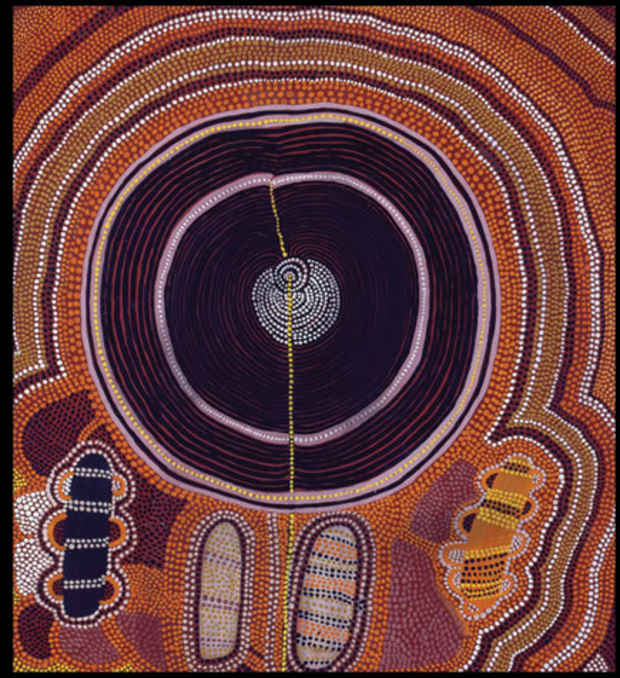"Icons of the Desert: Early Aboriginal Paintings from Papunya" Exhibition
Grey Art Gallery

This event has ended.
Exhibition of some of the earliest and rarest paintings by Indigenous Australian artists;
artists presented at Cornell, UCLA and New York University
"It is not every day that a new kind of beauty is born," says Professor Roger Benjamin of the University of Sydney, the exhibition's guest curator. Such is the achievement of the painters of Papunya, who adapted the rich meaning of their image-making to a new context, reasserting with pride and intelligence the world's oldest continuous culture.
In 1971, at Papunya, a government-established Aboriginal relief camp in the Central Australian desert, the Sydney school teacher Geoffrey Bardon provided a group of ranking Aboriginal men with the tools and the encouragement to paint. The resulting works became the first paintings ever to systematically transfer the imagery of their culture to a permanent surface.
This exhibition will be the first to focus on this founding moment, presenting some of the finest examples from the period drawn from the collection of John Wilkerson (Cornell PhD Class of 1970) and Barbara Wilkerson, never before exhibited as a group. The collection includes important works by such great names in the history of late twentieth-century Australian art as Clifford Possum Tjapaltjarri, Kaapa Mbitjana Tjampitjinpa, Tim Leura Tjapaltjarri, Uta Uta Tjangala, Charlie Tarawa (Tjaruru) Tjungurrayi, and Shorty Lungkarta Tjungurrayi, and many others. The exhibition's centerpiece is Johnny Warangkula Tjupurrula's staggering Water Dreaming at Kalipinypa of 1972, whose visual intricacy has been likened to a page in a medieval illumination manuscript; this work twice made Australian national headlines when it achieved world-record auction prices in 1996 and 2000.
The visual qualities of these so-called Papunya boards of which only 750 or so were ever made make them a unique body of work. Not only are these works tremendously significant as bearers of cultural meaning, but they are painted with a skill and inventiveness that has caused them to be admired and collected the world over, said Andrew C. Weislogel, the Johnson's associate curator and master teacher, who organized the exhibition with Benjamin.
The Australian Aboriginal worldview is based on Tjukurrpa, or the Dreaming, a belief that the world was formed by creator ancestors who shaped the land, made all living things, and laid out the moral code for human conduct. The many Dreamings that relate to specific geographical features, animals, plants, and the elements are the collective responsibility of numerous Indigenous Nations who ensure their preservation for future generations in song, story, and imagery. Several of the works in the exhibition include sacred imagery and depictions of ritual objects used in men's ceremonies that would normally be viewable only by initiated men within the Aboriginal community. However, key senior painters have granted permission for American audiences to view these works.
A fully illustrated exhibition catalogue is available from Cornell University Press. Professor Benjamin is the chief contributor and edited the volume with the Johnson's Weislogel. The catalogue includes contributions by prominent scholars and historians present during the movements early years.
Organized by the Johnson Museum, Icons of the Desert will travel to the Fowler Museum of Cultural History at the University of California, Los Angeles (May 3 - August 2) and the Grey Art Gallery at New York University (September 1 - December 5).
This exhibition and its programs at the Johnson Museum are made possible by generous grants from the Actus Foundation and the Cornell Council for the Arts.
[Image: Shorty Lungkarta Tjungurrayi "Mystery Sand Mosaic" (1974) Synthetic Polymer Paint on canvas board, 50.64 X 45.09 cm]
Media
Schedule
from September 01, 2009 to December 05, 2009